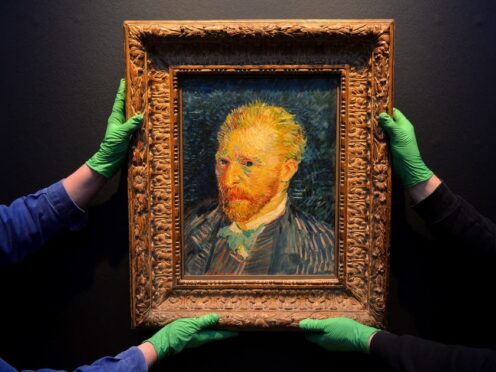
A Van Gogh self-portrait has gone on display in Cardiff for the first time, forming the centrepiece of an exhibition exploring whether such pieces are the original selfies.
The artwork, from 1887 and entitled Portrait of the Artist, has been loaned from the Musee D’Orsay in Paris and is on show at the National Museum Cardiff for the Drych ar yr Hunlun/Art of the Selfie event.
It is joined by pieces from a selection of artists from the national collection of Wales, including Rembrandt, Brenda Chamberlain, Francis Bacon, Bedwyr Williams and Anya Paintsil.
The works showcase different methods and artistic approaches to the concept of the self-portrait, used by artists throughout history to explore their identities and express themselves to the world.
Van Gogh, who lived from 1853 to 1890, painted more than 35 self-portraits and is arguably one of the most recognisable faces in Western art.
Dr Kath Davies, director of collections and research at Amgueddfa Cymru – Museum Wales, said: “We are delighted to welcome Van Gogh’s self-portrait to National Museum Cardiff.
“I am sure visitors to the museum will enjoy seeing this work by one of the world’s best-known painters displayed alongside paintings by artists from our collection here in Wales.”
She added: “Self-portraits and selfies are two different things, but they do have something in common – both are used to show who you are as a person.
“We would like to encourage visitors to feel inspired by the exhibition and take their own self-portraits in all kinds of creative ways.”

As part of the loan, La Parisienne by Renoir will be available to see in the Musee D’Orsay from March 26 as part of the Paris 1874: Inventing Impressionism exhibition.
The agreement closes the Welsh Government’s dedicated year of Wales in France, which has linked trade, culture and sport between the two countries.
Visitors are being encouraged to pay what they can for tickets to the exhibition, which runs from March 16 2024 to January 26 2025.

Enjoy the convenience of having The Sunday Post delivered as a digital ePaper straight to your smartphone, tablet or computer.
Subscribe for only £5.49 a month and enjoy all the benefits of the printed paper as a digital replica.
Subscribe